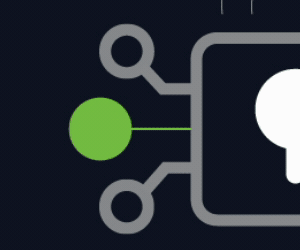The Department of Defense Cyber Defense Command took another step toward providing secure, real-time decision support to allied soldiers in a warfight with a proof of concept at U.S. Indo-Pacific Command in July.
A common operating picture was presented on the commander’s jotboard via a hybrid cloud forward-edge node leveraging identity, credential and access management (ICAM) with zero-trust capabilities enabled.
DOD always intended for zero trust to eventually support Mission Partner Environments (MPEs), environments that must be structured to incorporate different allies depending on needs.
“I will argue that anybody in this room that thinks that they know who is going to be in the coalition in the next engagement ahead of time will be absolutely wrong,” said Lt. Gen. Paul Stanton, DCDC commander, speaking at TechNet Augusta 2025 on Thursday.
Click the banner below to start implementing smarter security.
Mission Partner Environments Require Industry’s Partnership
DCDC’s vision for MPEs includes a rifleman at the tactical edge using a software-defined radio to call a foreign naval destroyer for fire, Stanton said.
Stanton used his Secret Internet Protocol Router Network token to access the common operating picture in the proof of concept, based on designed ICAM policies, a promising sign.
“We can achieve a functionally relevant capability to support the commands relatively quickly; that's where we're headed with MPE,” Stanton said. “But it takes everybody that's in this room to help us get there, because the technology is not technology that we're coding up inside of the basement at this headquarters.”
DCDC is helping design and integrate the technology, but industry partners are building the components. The command also needs appropriate data tagging to control access and present decision support that allied users are authorized to see, whether that’s electromagnetic spectrum data or other elements of the common operating picture.
International partners don’t have the infrastructure for DOD to impose its strict identity criteria for access on their users, but when zero trust is implemented properly, the ID solution can make a risk-informed decision to admit them.
Click the banner below to keep up with FedTech as an Insider.
Increased Wiper Attacks Call for Zero-Trust Solutions
DOD components also need backup and recovery solutions built on zero-trust principles, given the increase in wiper attacks aimed at destroying data or systems, says Travis Rosiek, public sector CTO at Rubrik.
Chinese-backed cyber operations have laid the groundwork for such attacks, and many U.S. organizations would fail to recover, Rosiek says.
The best capabilities are those with a proven track record of helping commercial organizations survive ransomware and threat actor attacks and recover to a known good state.
These backups operate on the principle of least privilege — granting users the minimum access required to do their jobs — and they don’t trust third-party systems such as network time protocol servers. Some agencies are required to retain data for years, and some cyberattacks fast-forward the clock on NTP servers so that data is purged.
A zero-trust mindset requires DOD to assume its adversaries have administrator controls on its backup environment and can turn off immutability and encryption and delete backups.
“Build in solutions as your last line of defense,” Rosiek says. “They have to mitigate all of these different attack vectors.”
To learn more about TechNet Augusta, visit our conference page. You can also follow us on the social platform X at @FedTechMagazine to see behind-the-scenes moments.















